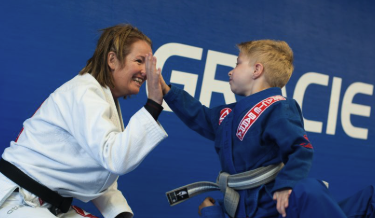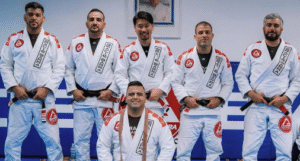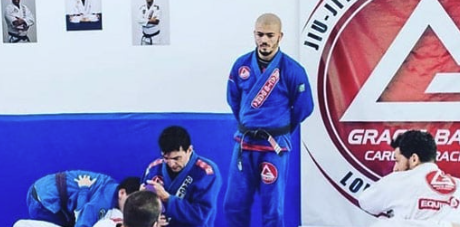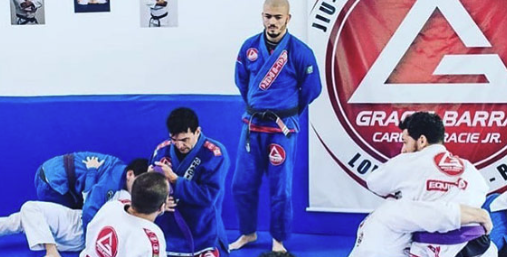MMA gyms Gracie Barra Agoura
Gracie Barra Agoura specializes in Brazilian Jiu-Jitsu (BJJ), not Mixed Martial Arts (MMA), there are several highly-rated martial arts and MMA gyms in and around Agoura Hills.
Gracie Barra Agoura (Brazilian Jiu-Jitsu)
Gracie Barra Agoura is a Brazilian Jiu-Jitsu academy that opened in 2022. It is part of the global Gracie Barra organization, a legacy in BJJ founded by Master Carlos Gracie Jr. The academy offers structured programs for adults, teens, and children, focusing on self-defense, discipline, and physical fitness.
Instruction: The academy is led by Professors Romulo Barral and Jaeson Bianchi. Professor Romulo Barral is a world-renowned BJJ Hall of Fame member and a five-time IBJJF World Champion. Professor Jaeson Bianchi has over a decade of experience as a kids’ instructor and is a military veteran.
Philosophy: The curriculum follows the Gracie Barra method, emphasizing a welcoming environment for all skill levels, from beginners to advanced practitioners. They teach the core principles of BJJ, including leverage and technique over brute strength.
Location & Contact:
Address: 5883 Kanan Rd, Suite 16 & 17, Agoura Hills, CA 91301
Phone: (805) 800-9681
Website: gbagoura.com
Hours:
Monday-Thursday: 12 PM – 8 PM
Friday: 12 PM – 1 PM
Saturday: 10 AM – 12:30 PM
Sunday: Closed
Mixed Martial Arts (MMA): A Detailed Overview
Mixed Martial Arts (MMA) is a full-contact combat sport that combines striking and grappling techniques from a variety of martial arts and combat sports. It is one of the fastest-growing sports in the world, celebrated for its unique blend of disciplines and its demand for a high level of athleticism, strategy, and skill. MMA is not a singular martial art but a style of fighting that integrates the most effective elements from different fighting systems into one comprehensive discipline.
- History and Evolution
The roots of modern MMA can be traced to various “all-style” martial arts competitions that existed around the globe, but its modern form was largely popularized by the Ultimate Fighting Championship (UFC) in the United States.
Early Days (1990s): The first UFC event in 1993 was a single-elimination tournament with minimal rules and no weight classes. It was designed to pit fighters from different martial arts—such as karate, sumo, boxing, and Brazilian Jiu-Jitsu (BJJ)—against each other to determine which style was most effective in a real-world combat scenario.
The Rise of Brazilian Jiu-Jitsu: Early UFC events were dominated by Royce Gracie, a BJJ practitioner who used his grappling and submission skills to defeat larger, stronger opponents from striking backgrounds. His success demonstrated the effectiveness of ground fighting and changed the trajectory of the sport forever.
Standardization and Mainstream Acceptance: To move past its “human cockfighting” reputation, the sport evolved in the late 1990s and early 2000s. The Unified Rules of Mixed Martial Arts were established, introducing weight classes, safety regulations, and a more structured format. This move was critical for MMA’s acceptance by athletic commissions and its rise into a mainstream sport.
- Rules and Competition
Modern MMA is governed by the Unified Rules, which ensure fighter safety while maintaining the sport’s full-contact nature.
The Octagon: Most major MMA promotions, including the UFC, use a caged, eight-sided enclosure known as the Octagon. The cage prevents fighters from falling out and allows for wrestling and grappling against the fence.
Rounds: Standard non-championship bouts are three five-minute rounds. Championship fights and main events consist of five five-minute rounds.
Victory: A fight can end in several ways:
Knockout (KO): When a legal strike renders an opponent unconscious.
Technical Knockout (TKO): When a referee, doctor, or a fighter’s corner stops the fight because the opponent is unable to intelligently defend themselves.
Submission: When a fighter taps out to a joint lock or chokehold.
Decision: When the fight goes the full distance and is scored by three judges.
Fouls: There is a list of prohibited actions, such as eye gouging, biting, strikes to the groin, and small joint manipulation.
- The Core Martial Arts Disciplines of MMA
The term “Mixed” in MMA is key. A successful MMA fighter must be proficient in a blend of both striking and grappling arts. The four primary pillars are:
- Striking (Stand-up Fighting):
Boxing: Provides fundamental footwork, head movement, and powerful punching techniques.
Muay Thai: Known as “the art of eight limbs,” it incorporates punches, kicks, elbows, and knee strikes, making it a highly effective striking art.
Karate/Taekwondo: Used for dynamic, long-range striking and powerful kicks.
- Grappling (Ground Fighting):
Brazilian Jiu-Jitsu (BJJ): The ground fighting foundation of MMA. BJJ focuses on using leverage and joint locks to control and submit an opponent, regardless of size. Its techniques are crucial for both offensive and defensive ground work.
Judo: Emphasizes throws and takedowns to get an opponent to the ground.
- Wrestling:
Greco-Roman & Freestyle: Wrestling is a critical discipline for controlling the distance of a fight. It teaches takedowns, clinch work, and how to maintain dominant positions on the ground. A strong wrestling background is often considered the most important factor for success in MMA.
- Hybrid Skills:
Modern MMA fighters don’t just use these styles in isolation. They train to seamlessly blend them together, using striking to set up takedowns, and grappling to set up strikes on the ground (ground-and-pound).
- Major MMA Organizations
While the UFC is the most dominant name in MMA, several other major organizations contribute to the sport’s global growth:
UFC (Ultimate Fighting Championship): The largest and most well-known promotion globally.
Bellator MMA: A major U.S.-based promotion that often competes for top-tier talent.
ONE Championship: Asia’s largest martial arts organization, which features MMA, Muay Thai, and kickboxing.
Professional Fighters League (PFL): Known for its unique season-based format where fighters compete for a championship title and a million-dollar prize.
- Global Impact and Popularity
MMA has grown exponentially in popularity, with a significant cultural impact. It is now a global sport with a massive following and a presence in mainstream media. Its rise has not only created new superstar athletes but has also driven a new wave of interest in its foundational martial arts, such as Brazilian Jiu-Jitsu, wrestling, and Muay Thai, as people seek to improve their fitness and learn self-defense. The sport’s focus on skill, discipline, and athleticism has helped it shed its early, controversial image to become a respected and influential force in modern sports and entertainment.
MMA gyms Gracie Barra Agoura
Gracie Barra Agoura Learn Brazilian Jiu Jitsu
Email: info@gbagoura.com
URL: https://gbagoura.com/
| Monday | 12:00 PM - 8:00 PM |
| Tuesday | 12:00 PM - 8:00 PM |
| Wednesday | 12:00 PM - 8:00 PM |
| Thursday | 12:00 PM - 8:00 PM |
| Friday | 12:00 PM - 1:00 PM |
| Saturday | 10:00 AM - 12:30 PM |
| Sunday | Closed |







